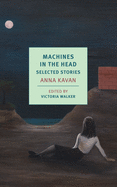
| Publisher: | NYRB Classics | |
| Genre: | Short Stories (single author), General, Biographical, Fiction, Science Fiction | |
| ISBN: | 9781681374147 | |
| Pub Date: | February 2020 | |
| Price: | $15.95 |
| Fiction |
by Anna Kavan
The atmosphere of Anna Kavan's stories is one of anxiety, dread and desperation. Written between 1940 and 1970, the stories collected in Machines in the Head are both hauntingly relevant and entirely alien. As editor Victoria Walker notes in the book's foreword, the enigmatic nature of the British author's work is perhaps best exemplified by the fact that the author named herself for one of her own fictional characters. What's real is never certain in the landscape of Kavan's stories, which often feature nameless protagonists in vaguely defined but unquestionably desolate circumstances.
One of Kavan's greatest strengths is the way in which she imbues menace into seemingly innocuous things. In "A Bright Green Field," it's the iridescence of a meadow at night that stands in for Kavan's real-life tormenters, which included a life-long heroin addiction and several stints in an asylum. For "Ice Storm," Kavan conjures dread by injecting newspaper headlines warning of terrible weather into the narrative. If Kavan's writing is remarkably consistent in terms of theme and symbols, it varies greatly when it comes to subject and setting. Though her earlier work dabbles in elements of the surreal and fantastical, Kavan's later stories approach true sci-fi territory.
Kavan's most memorable lines are succinct summations of despair: "I would like to lay hold of hope and strangle it once and for all," confesses the narrator in "Our City." This is a sentiment shared by many of Kavan's characters, who sometimes appear to be more akin to shadows than human beings. Dark tales deserve their day too, and with Machines in the Head, it's clear Kavan is one of the greats. --Zack Ruskin, freelance reviewer
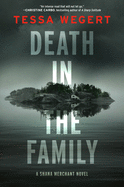
| Publisher: | Berkley | |
| Genre: | Police Procedural, Mystery & Detective, Traditional, Suspense, Thrillers, Fiction | |
| ISBN: | 9780593097892 | |
| Pub Date: | February 2020 | |
| Price: | $26 |
| Starred | Mystery & Thriller |
by Tessa Wegert
Preprandial drinks at a family estate. Well-heeled people who dress for dinner. A dark and stormy night. Debut novelist Tessa Wegert knows that these are tropes of a certain kind of murder mystery. At one point in Death in the Family, the narrator, detective Shana Merchant, is addressing the house's occupants and "giving them my best Poirot." The trick of Death in the Family is that Wegert is not only in control of the book's allusive material, but she has freshened it by fusing it with a contemporary thriller's grit.
One autumn Saturday, New York State's Bureau of Criminal Investigation receives a phone call from the caretaker of an estate on a private island in the St. Lawrence River. The caretaker is reporting a murder, although there's no body: just the bloodied bedding of a missing person, 26-year-old Jasper Sinclair. Detective Shana Merchant and her partner go to the island and question the caretaker, six Sinclair family members and lovers, and their host, the ancient Sinclair matriarch, whose passing, Shana notes, would mean that someone will inherit a mint.
If Death in the Family's cast and concerns recall an Agatha Christie novel, Shana's flashbacks to something harrowing that happened to her a year earlier bring to mind The Silence of the Lambs. Death in the Family augurs well for the projected Shana Merchant series, which will hopefully continue to provide clever plots foiled by Wegert's unsinkable lead detective, who may withhold information from the reader, but no more than Miss Marple ever did. --Nell Beram, author and freelance writer
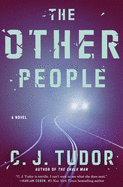
| Publisher: | Ballantine | |
| Genre: | Psychological, Domestic, Suspense, Thrillers, Fiction | |
| ISBN: | 9781984824998 | |
| Pub Date: | January 2020 | |
| Price: | $27 |
| Mystery & Thriller |
by C.J. Tudor
C.J. Tudor takes the revenge concept of an eye for an eye to stratospheric new heights of darkness in her exciting thriller mixed with a dash of the paranormal, The Other People.
While Gabe Forman is stuck in traffic, late for his daughter's birthday party, he sees a little girl pop up in the rear window of the car in front of him. She appears to be yelling for help, but a hand pulls her back down out of sight. And the girl looks just like his daughter, Izzy.
Traffic begins to flow again, and the car pulls away. Gabe gives chase, but the car soon loses him. He pulls over to call home to check on Izzy--and the police answer his landline. Gabe's wife, Jenny, and Izzy have been murdered. Jenny's parents identify the mutilated bodies and the funerals happen too quickly for Gabe to see for himself. No one believes the girl he saw in the car could have been Izzy.
One night, Gabe drives to a bridge to commit suicide, but is stopped by a mysterious man called the Samaritan. The man helps Gabe unravel the mystery of what happened to Izzy, but it's clear the Samaritan has his own agenda.
Tudor's (The Chalk Man; The Hiding Place) prose induces a jaw drop at the end of every chapter. The Other People is filled with dark, twisted, creepy moments, illuminating how far some people are willing to go to exact revenge, and how much they will have to pay for that justice. --Paul Dinh-McCrillis, freelance reviewer

| Publisher: | Catapult | |
| Genre: | Biography & Autobiography, Hispanic & Latino, American - Hispanic American Studies, Adventure, American - Native American Studies, Native American & Aboriginal, Indigenous Studies, Special Interest, Cultural, Ethnic & Regional, Social Science, Running & Jogging, Travel, Emigration & Immigration, Adventurers & Explorers, Sports & Recreation, Ethnic Studies | |
| ISBN: | 9781948226462 | |
| Pub Date: | March 2020 | |
| Price: | $26 |
| Starred | Biography & Memoir |
by Noé Álvarez
The son of Mexican immigrants, Noé Álvarez grew up poor in eastern Washington, watching his parents work menial jobs for pitifully low wages. He knew college was his best shot at getting out, but once there he felt aimless and overwhelmed. A chance encounter at a student conference led him to join the Peace and Dignity Journeys (PDJ), a group that conducts ceremonial runs throughout North America, in a quest to honor indigenous peoples and their stories. Irresistibly drawn to the run and its mission, Álvarez spent several months with the PDJ group, traveling roughly 6,000 miles from British Columbia to Guatemala. His memoir, Spirit Run, chronicles his physical and emotional journey and brings attention to the traumas the PDJ runs are seeking to confront.
Álvarez writes movingly of his mother's endless shifts at the apple-packing plant and his father's backbreaking labor in fruit picking and in construction. Both originally undocumented, his parents achieved their citizenship and fed their children, but at great cost to themselves. "I run to find fragments of my own parents sprinkled over the earth," Álvarez writes of a run through a forest in British Columbia. He runs with the weight of "their stories of hope and desperation" always in his mind, hoping to arrive at clarity, redemption, even peace.
Running, Álvarez begins to learn, is "a sacred motion," a "rhythm connecting me to the wind, the water, the woods" that forces him to deal with the highs and lows of his family's migration story. Spirit Run is a complex, thought-provoking journey, shot through with flashes of glory and hope. --Katie Noah Gibson, blogger at Cakes, Tea and Dreams
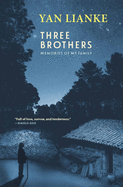
| Publisher: | Grove | |
| Genre: | Biography & Autobiography, Literary Figures, Personal Memoirs | |
| ISBN: | 9780802148087 | |
| Pub Date: | March 2020 | |
| Price: | $26 |
| Biography & Memoir |
by Yan Lianke, trans. by Carlos Rojas
Haunted by the passing of the men in his father's generation, Yan Lianke--one of China's most awarded, lauded authors--transforms his loss into Three Brothers: Memories of My Family. At the burial of their last uncle in 2007, his sister prompted him, "Brother Lianke, you've written so many books, why don't you write one about our family?" Yan's decision to "absolutely... write something for them" becomes an "epiphany" about family bonds in life, unbreakable even in death. Duke University professor Carlos Rojas, who worked on Yan's previous four titles published in the U.S., returns as Yan's excellent translator.
Born in rural Song county in Henan Province, Yan survived a childhood of onerous deprivation during China's Cultural Revolution of the 1960s and '70s. And yet, "While I was growing up, virtually the only thing I didn't lack was a feeling of warmth and protection." Yan's father, prematurely dead at 58, managed to fulfill his life goal of providing a residence for each of his four children upon their marriage.
Yan's First Uncle was the next to die, albeit at a more reasonable 83. Supporting a family of eight children on almost nothing, First Uncle's regular distribution of candies and crackers to the village children remains a joyful memory. A generation ends with Fourth Uncle's death at 69, from whom Yan learns the difference between living--"enduring day after day"--and life--"a sense of richness, of progress, and the future." Meandering through his past, Yan shows you can--and should--go home again. --Terry Hong, Smithsonian BookDragon
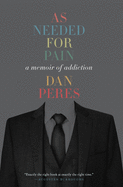
| Publisher: | Harper | |
| Genre: | Biography & Autobiography, Editors, Journalists, Publishers, Addiction, Psychology, Personal Memoirs, Psychopathology | |
| ISBN: | 9780062693464 | |
| Pub Date: | February 2020 | |
| Price: | $28.99 |
| Biography & Memoir |
by Dan Peres
As Needed for Pain is exactly what it professes to be: an addiction memoir. The story that its author, Dan Peres, tells is not especially unusual in its shape; its narrative of a progressively debilitating addiction, its devastating consequences and the narrator's eventual redemption has familiar contours. But it's an important story because it gives readers a frank and unsparing look into how wealth and privilege can feed the flames of addiction (and, later, make recovery more accessible).
In the 1990s and early 2000s, Peres appeared to be on top. He was a New York media insider with a succession of plum jobs at top fashion magazines. He had celebrity friends, a luxurious lifestyle and regularly attended swanky parties and international fashion shows. But none of this mattered much to him because he was also in the grip of an all-consuming opioid addiction. His days were defined by counting pills, taking pills and going to great, dangerous, deceitful lengths to obtain pills. Somewhat impressively (if disturbingly), he managed to conceal his rapidly progressing addiction from his family, his colleagues and a cadre of well-intentioned doctors for many years before, finally, spiraling far enough downward to bounce back to health.
At times, Peres's story is frustrating, because it's hard to imagine anyone but an affluent white man essentially sleep-walking (and, on one notable occasion, nodding out) to incredible career heights. However, his story underscores the fact that no one is safe from addiction, and that story is still worth telling. As a bonus, Peres's story also includes some fun celebrity gossip from the pre-recession media heyday. --Hannah Calkins, writer and editor in Indianapolis

| Publisher: | Penguin Press | |
| Genre: | Biography & Autobiography, Women, American, Literary Figures, Literary Criticism, Personal Memoirs, General, Artists, Architects, Photographers | |
| ISBN: | 9781594204609 | |
| Pub Date: | March 2020 | |
| Price: | $30 |
| Biography & Memoir |
by Gertrude Stein, illust. by Maira Kalman
With a text first published in 1933, this illustrated version of Gertrude Stein's The Autobiography of Alice B. Toklas transports readers to early 20th-century Paris and the birth of modernism in painting and literature. Artist Maira Kalman's (And the Pursuit of Happiness) lustrous images bring this classic to life. Kalman is a renowned fine artist who has illustrated other classic works, notably William Strunk and E.B. White's The Elements of Style. Here she captures the intricacies and material culture of Parisian salon life.
Stein wrote the "autobiography" of her life partner, Toklas, by imitating her plainspoken, matter-of-fact voice. Actually a biography of Toklas and autobiography of Stein herself, the book focuses on the couple's time living in Paris before and after World War I. It was a magical time of modern innovation in technology and the arts.
Rendered in broad, colorful strokes--themselves reminiscent of the artistic period--Kalman's portraits of now-famous artists and writers are lively and evocative, including Picasso and his partner Fernande, the Matisses and the Cézannes, Hemingway, William James and, of course, Stein and Toklas, among many others. Some illustrations portray Stein's famous home, the salon, the kitchen, all quaint yet lush interiors, while others capture the greater neighborhood, city and even countryside. The pictures are captioned with Stein's handwritten words, adding a certain charm and glamour to the story.
The Autobiography of Alice B. Toklas reads like a love letter to a bygone era. This illustrated version will appeal to fans of art history and literature. It's a testament to writers and artists who changed the world. --Scott Neuffer, writer, poet, editor of trampset
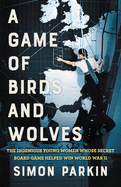
| Publisher: | Little, Brown | |
| Genre: | Women, Europe, Naval, Great Britain - 20th Century, Strategy, History, Military, World War II | |
| ISBN: | 9780316492096 | |
| Pub Date: | January 2020 | |
| Price: | $29 |
| History |
by Simon Parkin
The Battle of the Atlantic was the longest continuous military campaign in World War II. German U-boats targeted convoys of British merchant ships and the naval vessels that escorted them, with the goal of starving Britain into submission. By the end of 1941, Germany was succeeding--a fact that was a closely guarded secret in Britain.
In A Game of Birds and Wolves: The Ingenious Young Women Whose Secret Board Game Helped Win World War II, journalist Simon Parkin (Death by Video Game) tells the largely forgotten story of how Captain Gilbert Roberts, a retired naval officer brought back into service as a result of wartime manpower shortages, and a staff of young Wrens (Women's Royal Naval Service) helped turn the tide of the war. Together Roberts and his team created successful anti-U-boat tactics and trained almost 5,000 British naval officers in their use. Their method? A room-sized board game based on previously lost sea battles.
The subtitle is deceptive. Parkin gives full credit to the Wrens for the key role they played in defeating the U-boats, but unlike works in the growing genre of forgotten women's history, the focus is not on the women. That said, Parkin's work is a powerful account of an under-told piece of World War II history, relayed from the perspectives of not only Roberts and his team of Wrens, but those of victims of U-boat attacks, Roberts's German counterpart, several U-boat commanders and a number of British naval officers. --Pamela Toler, blogging at History in the Margins
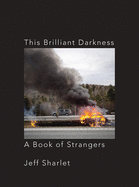
| Publisher: | W.W. Norton | |
| Genre: | Photography, Social Classes & Economic Disparity, Poverty & Homelessness, Social Science, Photoessays & Documentaries, Essays | |
| ISBN: | 9781324003205 | |
| Pub Date: | February 2020 | |
| Price: | $25 |
| Social Science |
by Jeff Sharlet
The subject of each snapshot within This Brilliant Darkness has a story to tell, many of them uncomfortable, even painful. But author and journalist Jeff Sharlet treats each "stranger" with a radical empathy and clarity that can be felt even in the photos that accompany his prose. This, his most innovative work to date, is a bold experiment in finding insight through image, in reflecting on the experiences of others as well as yourself. The work collected here over two years is sharp, poetic and vital art for an age of isolation.
There may be no stronger piece of nonfiction published in 2020, in fact, than "12:07 p.m." This devastating selection recounts the life of Charley Keunang, an unarmed homeless man shot by the LAPD on March 1, 2015. Sharlet writes of Charley's loving family, his acting career, the botched bank robbery that sent him to prison, and the homeless community devastated by his death with a keen sense of compassion. The chapter alone is exemplary of the sheer quality of This Brilliant Darkness. Whether interviewing gay activists in Russia or donut shop workers in New Hampshire, the author has captured the weight of their lives and evoked the spirit of Lorca's duende in doing so.
Throughout This Brilliant Darkness, there is a sense of the truth as impermeable, a quality akin to Joan Didion's work. Yet there is also such identification here, as if the distance between author and subject is the thinnest of layers. --C.M. Crockford, freelance reviewer
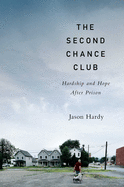
| Publisher: | Simon & Schuster | |
| Genre: | Biography & Autobiography, Public Policy, Personal Memoirs, Law Enforcement, Social Services & Welfare, Penology, Social Science, Political Science | |
| ISBN: | 9781982128593 | |
| Pub Date: | February 2020 | |
| Price: | $27 |
| Social Science |
by Jason Hardy
Frustrated by a series of dead-end jobs, Jason Hardy became a parole officer in New Orleans in an attempt to do some good in the world. A white, well-educated man from a middle-class family, he soon realized his upbringing and advantages had given him almost no context for the people and problems he would encounter in his new job. The Second Chance Club, Hardy's first book, gives a thoughtful, timely account of the largely hidden probation-and-parole arm of the U.S. criminal justice system.
Hardy takes readers inside the nitty-gritty routine of a parole officer's days and weeks: checking up on offenders who have served jail or prison time and trying to help them find employment, stay off drugs or get the physical or mental health care they need. A parole officer must also weigh the risks the offender is facing against the risks they present to their communities: many offenders end up hurting themselves or other people out of sheer desperation, and officers must try to step in before that happens.
Mass incarceration in the U.S. is increasingly well documented, but probation and parole (P&P) receives much less attention and funding, especially at the state level. Hardy argues that it's worth investing in offenders because they are human beings who have made mistakes, struggled against overwhelming odds and deserve a chance at lasting happiness. Well-researched, compelling and deeply humane, The Second Chance Club is an important addition to the voices calling for criminal justice reform in the U.S. --Katie Noah Gibson, blogger at Cakes, Tea and Dreams
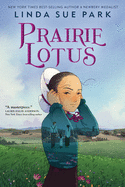
| Publisher: | Clarion Books/Houghton Mifflin Harcourt | |
| Genre: | Bullying, People & Places, United States - Asian American, General (see also headings under Social Themes), Family, Social Themes, United States - 19th Century, Juvenile Fiction, Historical, Prejudice & Racism, Diversity & Multicultural | |
| ISBN: | 9781328781505 | |
| Pub Date: | March 2020 | |
| Price: | $16.99 |
| Starred | Children's & Young Adult |
by Linda Sue Park
Narrated by a smart, clear-sighted and tremendously likable protagonist, Prairie Lotus is a richly layered work of historical fiction set in a landscape that will be familiar to Little House on the Prairie readers.
After her Chinese-Korean mother's death, 14-year-old Hanna and her white father make their way east from California, landing in LaForge, a bustling frontier town in the Dakota Territory. Their plan is to open a dry-goods or tailoring business, though Hanna's dream is to have a dressmaking shop. But first they have to take the measure of LaForge. It's 1880 and many of the town's citizens have never seen a nonwhite person--that is, other than the Ihanktonwan tribal members from whom they appropriated the land. Hanna worries that they won't accept her, a "half-Chinese" girl.
Fans of Laura Ingalls Wilder's Little House books should appreciate Hanna's homesteading chores (sieving the flour for weevils and pantry moths, conjuring "delicious soups from nothing but scraps and bones") and similar details. Prairie Lotus is more than a simple spin-off of a beloved classic, though. As a child, Newbery Medal-winning author Linda Sue Park (A Single Shard; A Long Walk to Water; Gondra's Treasure), the daughter of Korean immigrants, created her own Little House scenarios, which she calls a "pre-internet version of fan fiction." Although Park's research uncovered that the Chinese population was growing during the time of Wilder's stories, Koreans hadn't yet immigrated to the U.S. Hanna is Park's way of inserting herself into the stories. She is a character firmly entrenched in her time who also confronts the inherent racism and sexism of the 19th-century west. As one can expect from Park, Prairie Lotus's gorgeous, fluid storytelling carries the reader along swiftly to a satisfying conclusion. --Emilie Coulter, freelance writer and editor
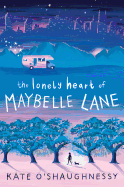
| Publisher: | Knopf | |
| Genre: | Friendship, Parents, Family, Social Themes, Self-Esteem & Self-Reliance, Juvenile Fiction | |
| ISBN: | 9781984893833 | |
| Pub Date: | March 2020 | |
| Price: | $16.99 |
| Children's & Young Adult |
by Kate O'Shaughnessy
In Kate O'Shaughnessy's sensitive first novel, a wistful young girl hatches a plan to win her father's love and respect. Step one: find a way to meet him.
All 11-year-old Maybelle Lane has ever known of her daddy is a voicemail on her musician momma's old flip phone. Then she recognizes his "deep, night-sky purr of a voice" on the radio and learns he's a DJ in Nashville. Momma begs her to forget him, but Maybelle listens faithfully. When her daddy announces a singing competition, Maybelle enters, even though her anxiety makes performing nearly impossible. Luckily, Momma's out of town for a gig and Maybelle's neighbor Mrs. Boggs, a grieving widow and the "strictest teacher in our parish," is willing to drive the girl from Louisiana to Tennessee. To Maybelle's dismay, Tommy O'Brien, a bruise-faced boy her age from their trailer court, stows away in the RV. While Maybelle anticipates her daddy healing the loneliness Momma can't quite erase, her growing relationships with misunderstood Tommy and strong, good-hearted Mrs. Boggs begin filling up some of her heart's empty spaces.
Packed with the triumphs, mishaps and self-discovery essential to a great road trip story, Maybelle's mission to Nashville takes readers on a quest that emphasizes the importance of found family and hope. O'Shaughnessy keeps the resolution touchingly and realistically imperfect while lightening each central character's burdens through the support of the others. Lonely or not, Maybelle Lane's heart beats with grace and courage. --Jaclyn Fulwood, youth services manager at Main Branch, Dayton Metro Library

| Publisher: | Princeton Architectural Press | |
| Genre: | Friendship, Animals, Death, Grief, Bereavement, Social Themes, Mammals, Juvenile Fiction | |
| ISBN: | 9781616898861 | |
| Pub Date: | March 2020 | |
| Price: | $17.95 |
| Children's & Young Adult |
by Gaya Wisniewski
Gaya Wisniewski's first book in English, My Bison, is a gentle story of love, loss and healing told through unadorned text and extraordinary illustration.
One spring, a young girl's mother holds her up to see a bison. "Look!" the mom says. "He's back!" The girl visits the meadow every day, getting closer and closer to the large animal until they're friends. The girl pets him and brings him food. But one morning, her bison must leave "to join up with the other bison." She wishes he could stay, but she's sure he'll return "when snow cover[s] the ground again." The girl is lonely until it's winter again, and her bison does return. He listens "with tenderness" as she relates stories about the forest she loves and all the things she's done while he was gone. The years go by and her bison leaves many times, always returning to the girl. Until one winter when he does not.
As the narrator imparts her story of unlikely friendship, Wisniewski's breathtaking art portrays the bison doing increasingly fantastical things, such as eating with a spoon, sipping tea at a table and lying tucked into a cozy bed. Likewise, as the story progresses and readers fall more deeply under its spell, the charcoal and ink illustrations become enhanced by strategically placed deep blue and mauve. The spare text, surrounded by plenty of white space, adds to the hushed tone of the piece, and leaves plenty of room for reflection. Deeply contemplative, never frightening, this fanciful tale of friendship amid the passing years is not to be missed. --Lynn Becker, blogger and host of Book Talk, a monthly online discussion of children's books for SCBWI